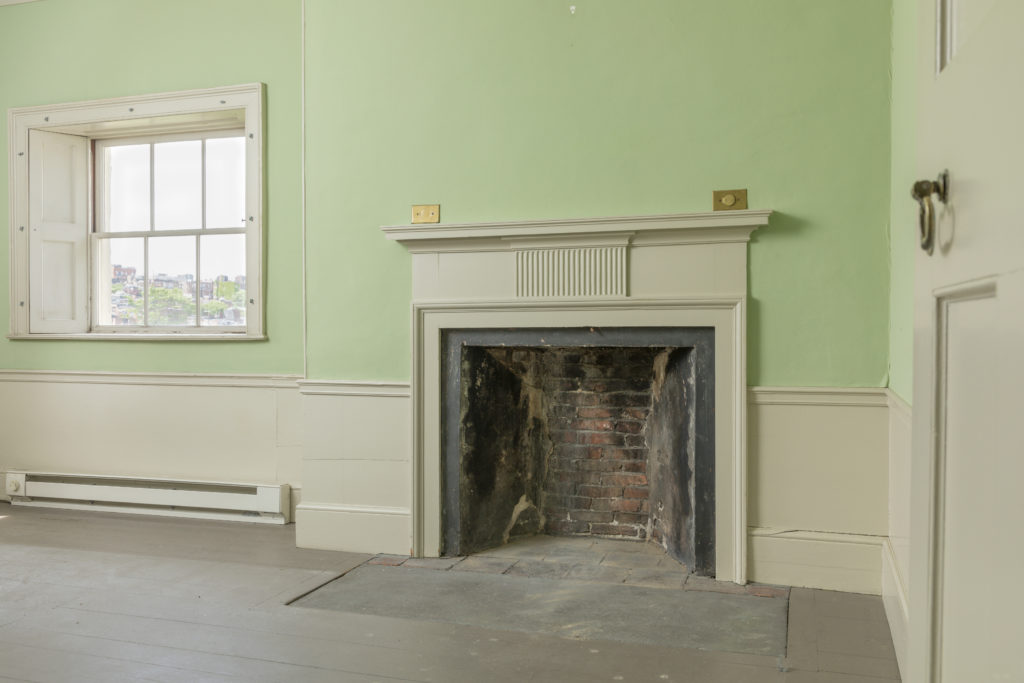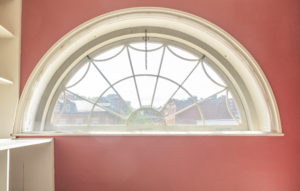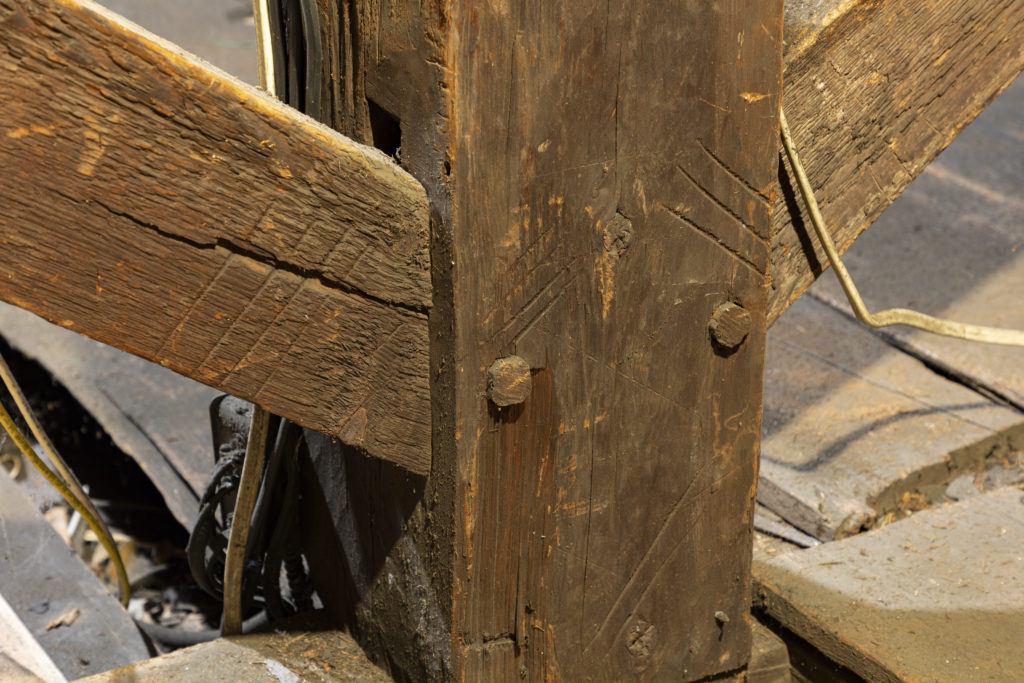 Otis House
Otis House
The Third Floor

The third floor originally contained six rooms, four of which were heated by fireplaces. There is no documentary evidence of how these rooms were used by the Otises, but as they were only accessible via a rear staircase, they were surely given over to servants, children, or to storage.

As the prestige of Otis House as a boarding house declined throughout the nineteenth century, the third floor was divided into an increasing number of rooms until the total reached sixteen rooms and five closets by 1916. Most of the partitions dividing the rooms have since been removed and a number of early wallpapers were discovered in the process. In the 1960s and 1970s when needs for private office space increased, many of the rooms on the third floor were subdivided again.
The Lunette Window

The design and placement of a lunette window on the third floor was surely meant to be appreciated from the exterior. Though the original window was removed in the mid-nineteenth century, a combination of architect Charles Bulfinch’s drawing, a print from 1834, and evidence discovered in the interior plaster work allowed restorers in 1919 to determine the size and arc of the original.
The Attic

Although the exterior walls of Otis House were brick, the interior was timber framed; the vast majority of which remains in place and functioning as originally intended. The size, finish, and numbering or “scribing” of the rough-hewn timbers indicate a logical sequence of construction and layout, conforming to the configuration generally found in buildings of the Federal period.